Last updated: September 2025
When you apply for an apartment in the US, UK, or Canada, landlords often request recent bank statements to check income and spending patterns. That raises a common question: can I edit my bank statement before I submit it? The answer depends on what you mean by “edit.” If you need to edit bank statements for apartment applications, only make transparency‑first changes that protect privacy or improve readability—never alter the underlying numbers. :contentReference[oaicite:0]{index=0}
This guide explains the difference between lawful formatting and illegal falsification. You’ll learn how to use proper redaction, what changes are prohibited, and when a professional, compliance‑focused service can help you present documents clearly without crossing legal lines.
Below is a glossary of related terms you may encounter while researching bank statement editing. Understanding these will make the rest of the article easier to follow.
- Bank statement editing – formatting, redaction, and annotation of statements you already received from your bank.
- Proof of income – documents (pay stubs, W‑2, 1099, T4, Notices of Assessment) and bank statements that verify earnings.
- Pay stub / payslip – record of wages and deductions often used with bank statements for rentals.
- W‑2 / 1099 / T4 / NOA – annual tax forms (US/Canada) summarizing income and taxes withheld.
- CFPB / FTC / IRS – US regulators that oversee consumer finance, fair practices, and tax compliance.
- FCA / ICO – UK regulators for financial services and data protection.
- FCAC / CRA – Canadian regulators for consumer financial protection and tax administration.
- FCRA / GDPR / PIPEDA – privacy and data accuracy laws in the US, EU/UK, and Canada.
- Bank statement maker – a tool or service that formats an existing statement (not a counterfeit document creator).
- Redaction – masking sensitive data such as account numbers and identification numbers.
- Fraud detection – checks landlords and lenders use to confirm a document hasn’t been materially altered.
- Notice of Assessment (NOA) – tax assessment summary issued by the Canada Revenue Agency.
By the end, you’ll know how to prepare your bank statements for a rental application, which edits are permissible, what clearly qualifies as fraud, and when to seek professional help.
What are the legal basics of editing a bank statement for an apartment?
Editing a bank statement is not automatically illegal. The law distinguishes between transparent formatting and deceptive changes. Across the US, UK, and Canada, altering substantive information to mislead a third party is fraud; privacy‑minded redaction and obvious error correction are generally acceptable.
How do US laws treat bank statement alterations?
In the United States, the key factor is intent. Federal law (18 U.S.C. § 1014) criminalizes knowingly making false statements to influence a financial institution. Changing balances, deposit amounts, dates, or payees to appear more creditworthy can lead to fraud or forgery charges. By contrast, correcting a typo or redacting an account number for privacy is typically lawful when done transparently and without concealing facts.
How do UK regulations view bank statement edits?
The UK’s Fraud Act 2006 and the Forgery and Counterfeiting Act 1981 make falsifying or forging financial documents a criminal offense. Legitimate edits—such as masking an account number or flagging a bank‑issued correction—are permissible. Any alteration intended to mislead a landlord or lender can constitute fraud. The Financial Conduct Authority (FCA) also provides channels for reporting suspected misconduct.
What about Canada’s rules?
Canada treats falsification similarly. Under the Criminal Code, forgery includes altering a genuine document in a material way with intent to induce someone to act on it. Immigration, Refugees and Citizenship Canada (IRCC) warns that submitting false or altered documents is fraud and can result in refusals, bans, or removal. Privacy‑oriented redactions are generally acceptable when they do not change the financial data.
Bottom line: you may tidy and redact; you may not alter the substance. If you are unsure, consult a qualified attorney or work with a compliance‑first document service.
Which edits to bank statements are allowed?
You can—and should—improve readability while protecting sensitive information. If you need to edit bank statements for apartment screening, focus on format, clarity, and privacy, not on changing any numbers. The landlord must still be able to verify deposits, balances, and dates.
Can I redact sensitive information?
Yes. Redact personal identifiers like full account numbers, home addresses, Social Security or national insurance numbers. Keep the last 4 digits of the account number and your name visible so the statement remains verifiable. Use true redaction tools that remove content from the file—not simple black boxes that can be deleted.
- Export to PDF before redacting; avoid screenshots that reduce legibility.
- Apply digital redaction (not cropping) and then “flatten” the PDF to lock edits.
- Test by copying text: if hidden data appears, the redaction isn’t secure.
- Leave transaction amounts, dates, and payees visible unless a law requires otherwise.
Over‑redacting can create suspicion. Mask only what’s necessary for privacy; keep financial details readable so reviewers can complete their checks.
What about correcting errors?
If the bank misspelled your name or mis‑classified a transaction, ask the bank to issue a corrected statement whenever possible. If you must submit immediately, highlight the apparent error and include a short note or letter of explanation. Do not “fix” numbers yourself—attach the bank’s correction once it arrives.
Are there other formatting edits I can make?
Formatting changes that improve clarity are lawful and professional:
- Combine pages into one PDF and add page numbers (“Page 1 of 6”).
- Highlight recurring deposits so a reviewer can confirm your pay cycle.
- Re‑order pages if a scan printed out of order; maintain chronological flow.
- Enhance legibility by improving contrast or using OCR for accessibility.
Never hide or change financial data. Keep an unedited copy and be transparent about any formatting you applied.
What bank statement edits are illegal (and why)?
Illegal edits cross the line from clarity to deception. Creating fake documents or materially altering real ones to mislead a landlord or lender is fraud. The rules are consistent across the US, UK, and Canada: if the change could affect a decision and you know it’s untrue, it’s unlawful.
Changing financial data
Modifying amounts, balances, dates, or payees is always illegal. Common examples include inflating income, removing overdraft fees, manipulating the daily ledger, or replacing payees with “generic” entries to hide spending. These changes tend to leave a digital or mathematical trail.
Adding or omitting transactions
Inserting fake deposits, deleting withdrawals, or removing entire pages to disguise overdrafts is unlawful. Reviewers compare page totals, verify beginning and ending balances, and look for sequence gaps. Many also validate direct deposits with employers or request statements directly from banks.
Misrepresenting identity or accounts
Editing a statement to appear as someone else’s account, or showing an account you do not own, is identity fraud. Similar risks arise if you splice content from different accounts to form a single “clean” statement. Landlords and lenders can cross‑check names, addresses, and account numbers against your application and credit records.
What are the penalties?
Consequences can include fines, restitution, eviction, loss of future credit opportunities, and criminal charges under forgery or fraud laws. Some agencies may impose multi‑year bans when false documents are submitted. Even if charges aren’t filed, misrepresentation can damage your reputation and jeopardize future housing or lending decisions. :contentReference[oaicite:1]{index=1}
When do you need professional document formatting?
Many renters can handle simple redactions. But high‑stakes applications benefit from an expert who understands compliance and presentation. A professional editor reduces avoidable back‑and‑forth, anticipates questions, and packages documents so busy reviewers can evaluate them quickly.
Renters applying for apartments
In competitive markets, landlords may request several months of statements to confirm income stability. Professional formatting ensures legibility, consistent page order, and clear highlighting of recurring deposits. Experts can add short annotations to explain irregular but legitimate items, without altering the data.
This is especially helpful if your income varies, you receive tips, or you’re paid on multiple schedules. A tidy package—statements plus pay stubs, tax forms, and a brief letter of explanation—helps the reviewer connect the dots.
Auto loans and small‑business loans
Lenders scrutinize cash flow. Clean, chronological statements minimize confusion and reduce requests for re‑submission. Sole proprietors and small‑business owners often have seasonal swings; a professional can organize statements alongside invoices and deposits so the trend is easy to follow.
Self‑employed and freelance applicants
Freelancers may have multiple revenue sources and platforms. Editing for clarity—grouping similar deposits or adding simple labels like “invoice paid”—helps reviewers understand your pattern. An expert can reconcile statements with your invoices to avoid mismatches that might trigger fraud concerns.
When legal compliance matters
If you’re unsure whether a change could be construed as falsification, pause. Engage a compliance‑first editor who will decline prohibited edits, document every change, and communicate precisely what was and wasn’t done. That transparency protects you and speeds up review.
How does our bank statement editing service work?
FinancialDocsProvider.com formats and organizes genuine financial documents so they’re clear, professional, and compliant for landlords, lenders, and other authorities. We never fabricate numbers, create fake pages, or alter financial data. Our role is presentation and privacy—nothing more. :contentReference[oaicite:2]{index=2}
1. Client intake & consultation
We begin with a confidential consultation to understand your goal—apartment, auto loan, or business financing. We explain what edits are permissible, outline what we won’t do, and propose a compliant packaging plan that matches the reviewer’s requirements.
2. Document collection & reconciliation
You provide original bank statements, pay stubs, and other proof of income. Our team cross‑checks documents for consistency and flags discrepancies so you can obtain bank‑issued corrections. We never alter the underlying numbers or dates.
3. Formatting & redaction
We clean the layout: group pages, add page numbers, highlight key deposits, and redact sensitive personal information. Edits are clearly marked, transparent, and non‑deceptive. We also align the presentation to formats preferred by property managers and lenders.
- What we do not do: change amounts or dates, fabricate deposits, copy logos to impersonate a bank, or remove pages to hide information.
4. Quality check & secure delivery
Every file undergoes a quality review for accuracy and compliance. We deliver your final PDFs via secure transfer and store unedited copies in case verification is requested by the reviewer.
5. Timelines & confidentiality
Most projects are completed within 24–72 hours, depending on complexity. We maintain strict confidentiality and follow applicable privacy laws in the US, UK, and Canada. For details, see our financial document services page or our article on the legality of bank statement edits.
Compliance checklist & document packaging tips
Use this pre‑submission checklist to avoid delays. It helps you deliver a package that is complete, compliant, and easy to review.
- Collect recent statements: Provide at least three months; many reviewers prefer a 90‑day history.
- Verify consistency: Ensure beginning and ending balances reconcile across months; tie deposits to pay stubs or invoices.
- Redact personal identifiers: Mask full account numbers and sensitive IDs; leave the last four digits and your name.
- Leave financial data intact: Never alter amounts, dates, or descriptions. Use a brief letter of explanation for unusual items.
- Include supporting documents: Pay stubs, W‑2/1099/T4/NOA, invoices, letters of employment, and any approval emails.
- Organize chronologically: Combine PDFs in order, number pages, and ensure month‑to‑month continuity.
- Keep originals: Retain unedited copies and be ready to authorize a bank‑issued verification if requested.
- Flatten redactions: Use secure redaction and verify that hidden text can’t be recovered.
- Use clear filenames: Example: 2025‑05_BankName_Checking_Statement_1of3.pdf.
- Add a cover note (optional): One paragraph summarizing what’s included and any clarifications.
- Double‑check for red flags: Ensure fonts, logos, and math are consistent; confirm that no pages are missing.
Following these steps signals professionalism and respect for compliance, which can improve your approval odds.
What red flags do landlords look for in bank statements?
Experienced reviewers use a mix of manual checks and software to spot tampering. Even small inconsistencies raise questions, so review your documents carefully before submitting.
- Inconsistent fonts or spacing: Mismatched typefaces and irregular alignment suggest edits.
- Incorrect math: Beginning balances that don’t reconcile, or arithmetic errors between transactions.
- Unnatural round numbers: Repeated deposits or withdrawals in clean multiples that defy your pay pattern.
- Off‑brand logos: Logos or headers that don’t match the bank’s current branding.
- Missing pages: Gaps may hide overdrafts or large withdrawals; include all pages.
- Mismatched information: Statements should align with your application, pay stubs, and ID documents.
- Excessive redaction: Masking too much can appear evasive; redact only what’s necessary for privacy.
- Scan artifacts: Crooked scans, different page sizes, or blurry sections that obscure key details.
- Out‑of‑sequence dates: Page headers or footers showing dates that don’t align with transaction history.
If any of these appear, correct them before submitting or request a bank‑issued replacement statement.
Where can I find official guidelines and resources?
Compliance starts with trustworthy sources. These government and in‑depth resources explain your rights and outline the consequences of fraud.
- Consumer Financial Protection Bureau – Tenant screening rights and adverse action notices
- Criminal Code of Canada – Forgery provisions
- IRCC – Consequences of immigration and citizenship fraud
- UK Financial Conduct Authority – Report wrongdoing or misconduct
- Is It Legal to Edit a Bank Statement? Here’s What You Should Know
- Bank Statements vs. Pay Stubs – Which Do Landlords Accept?
- Bank Statements for Rental Application: 6‑Month Guide
- proof of income editing services
- bank statement formatting
- pricing
- contact our team
- about our process
Frequently asked questions
Is it legal to edit bank statements for an apartment application?
Yes—if you’re correcting obvious errors or redacting private information without changing the financial data. Altering amounts, dates, or transactions to mislead a landlord is illegal and constitutes fraud. Always keep unaltered copies for comparison and be transparent about any formatting.
What information should I hide on a bank statement?
Mask personally identifiable information such as full account numbers, Social Security or national insurance numbers, and home addresses. Do not hide balances, dates, or transaction details—excessive redaction can make a document look suspicious and may trigger additional verification.
How many months of bank statements do landlords usually require?
Most landlords request three months of recent statements to verify income and spending habits. Some may ask for six months in competitive markets or when income is irregular. Follow the exact instructions in the application to avoid delays.
Can landlords spot altered bank statements?
Yes. Reviewers use verification tools and manual checks to detect mismatched fonts, inconsistent math, and out‑of‑sequence balances. They may also request statements directly from your bank or cross‑check deposits with your employer.
Why should I hire a professional to edit my bank statements?
A compliance‑first service ensures edits remain transparent and ethical. Experts know how to redact sensitive data without obscuring essential information, organize statements logically, and avoid red flags that trigger suspicion. That saves time and reduces the risk of misunderstandings.
Need accurate, reliable financial documents fast? Contact FinancialDocsProvider.com now.
About the author: FinancialDocsProvider.com Blog Team — Our team includes former accountants, compliance officers, and document editors with decades of experience in financial services. We specialize in formatting and organizing genuine pay stubs, bank statements, and tax documents for renters, entrepreneurs, and loan applicants. Learn more on our About Us page.

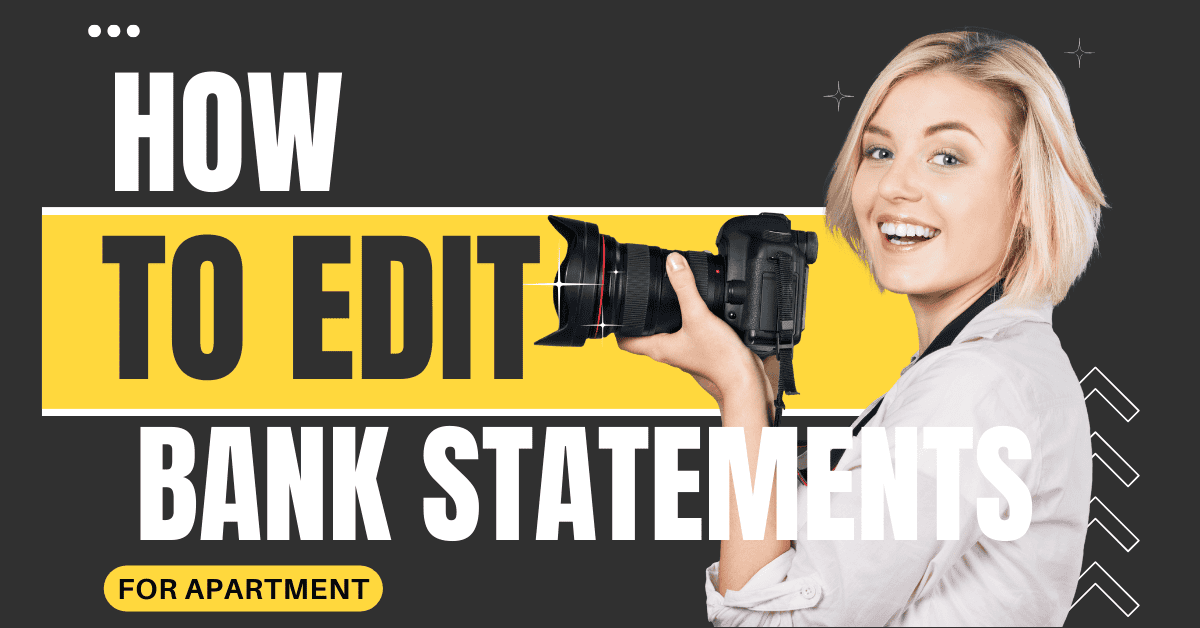
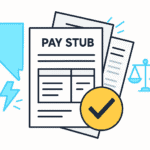



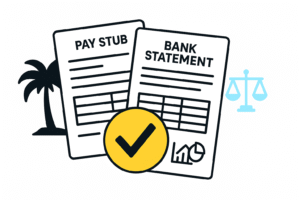
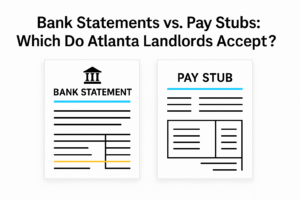
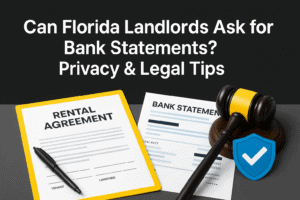
Add comment